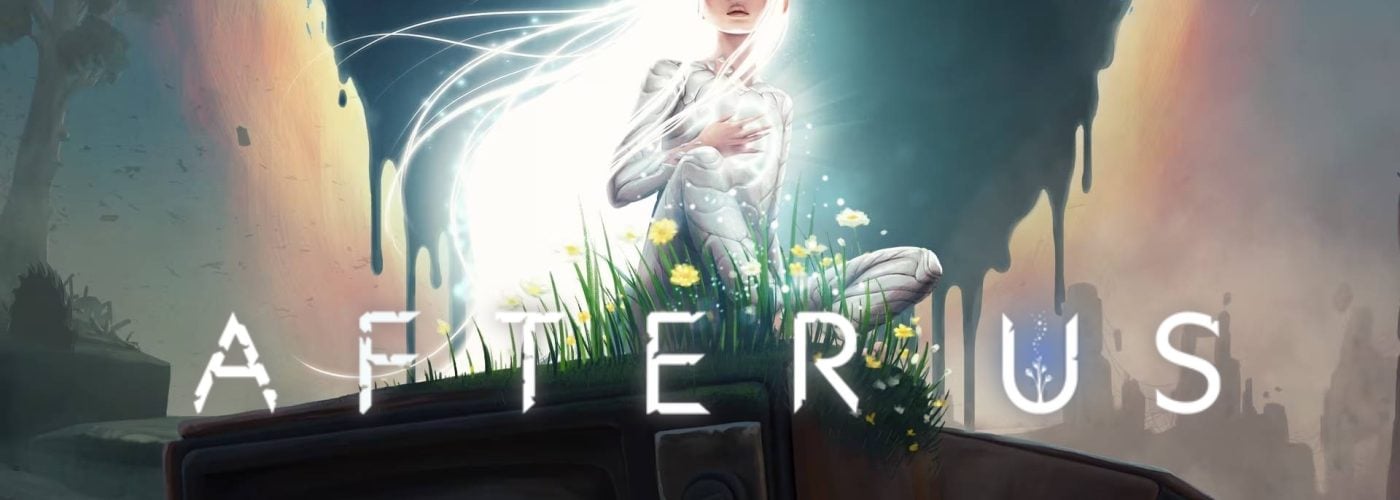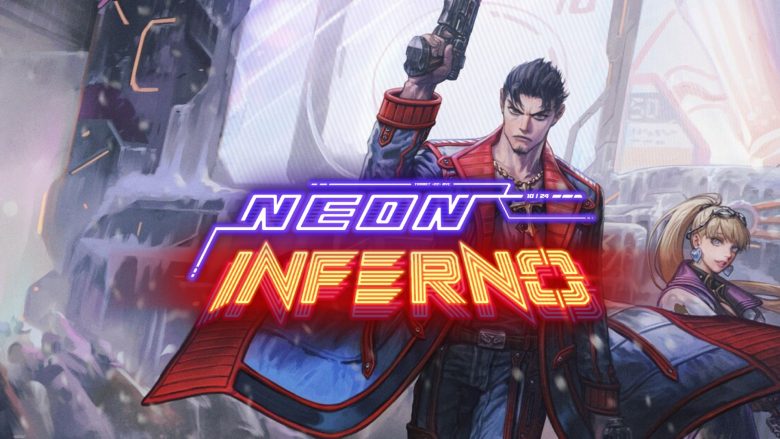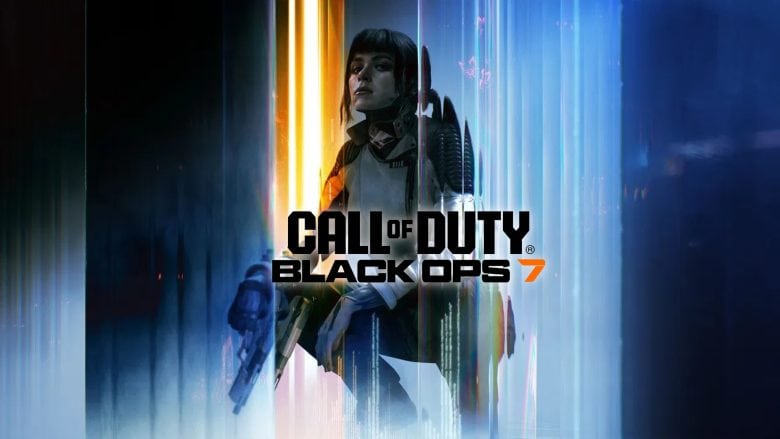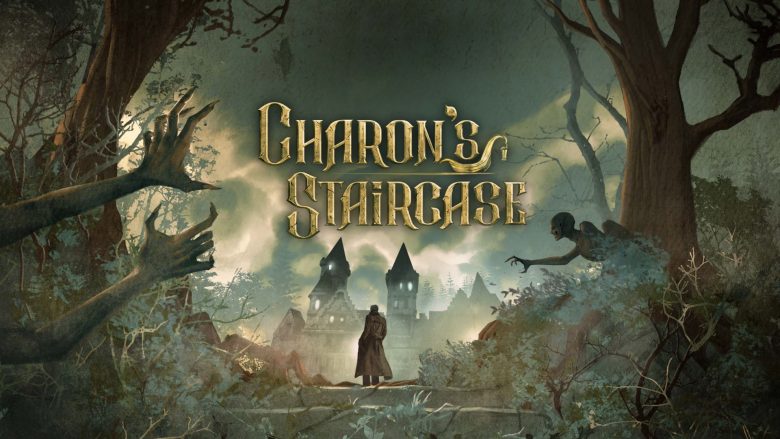When all is lost to darkness, hope still finds a way to shine.
After Us is a third-person action-adventure that masterfully intertwines compelling platforming with a rich, environmental narrative. Intentionally eschewing mainstream trends, it embraces an artistic and conceptual approach over adrenaline-charged gameplay or conventional storytelling. Released in May 2023, After Us has captivated players with its hauntingly melancholic yet deeply evocative atmosphere, urgent ecological themes, and surreal, decaying beauty.
Players take on the role of Gaia, a forest nymph and Spirit of Life—an ethereal guardian tasked with preserving the last fragile remnants of nature in a world ravaged by humanity. Her journey unfolds in a visually breathtaking world where every environment tells a poignant story of loss, exploitation, and decay. Eschewing flashy effects and complex mechanics, the game’s true power lies in its ability to evoke deep emotion through visual and auditory storytelling. Its narrative slowly unfolds through exploration and quiet reflection, without relying on dialogue or textual exposition.
Though formally a fully-fledged 3D platformer, After Us transcends genre boundaries, delivering a truly immersive and symbolic experience akin to an interactive visual poem. Available on PlayStation 5, Xbox Series X/S, and PC, this is a game not to be missed.
Piccolo Studio: A Small Team With a Big Heart for Storytelling
After Us is developed by Piccolo Studio, an independent game studio based in Barcelona, founded by three seasoned veterans from the advertising industry who chose to channel their creativity into video games with an artistic and intimate vision.
Their debut project, Arise: A Simple Story (2019), showcased a deep commitment to emotional and symbolic storytelling, weaving a touching narrative about loss and memory. After Us marks a significant evolution in their craft, raising the bar in both ambition and complexity, while preserving a coherent thematic and stylistic identity.
Piccolo Studio has demonstrated a talent for crafting gaming experiences that invite introspection rather than mere entertainment, with After Us serving as a powerful testament to this philosophy. The team has shared in various interviews that the game originates from their deep concern for the planet’s future, paired with a desire to produce a work that is both a poignant critique and a heartfelt homage to the fragile beauty of the natural world.
Published by Private Division, a subsidiary of Take-Two Interactive known for supporting high-quality independent titles, After Us benefits from a publisher celebrated for backing bold, innovative projects that break away from typical blockbuster formulas—such as The Outer Worlds, Rollerdrome, Kerbal Space Program, and Hades.
This partnership has proven highly successful, allowing Piccolo Studio to preserve its artistic freedom while gaining access to global distribution channels.
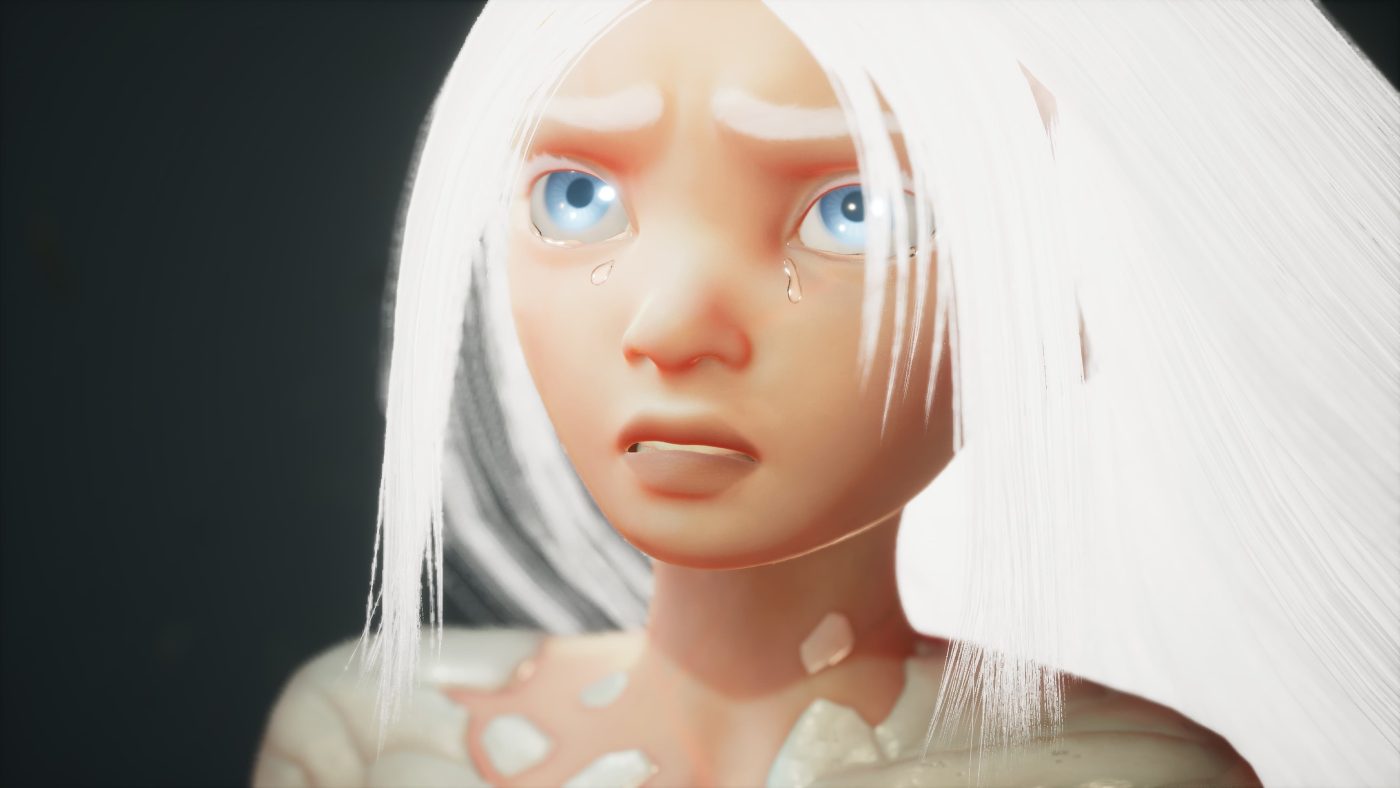
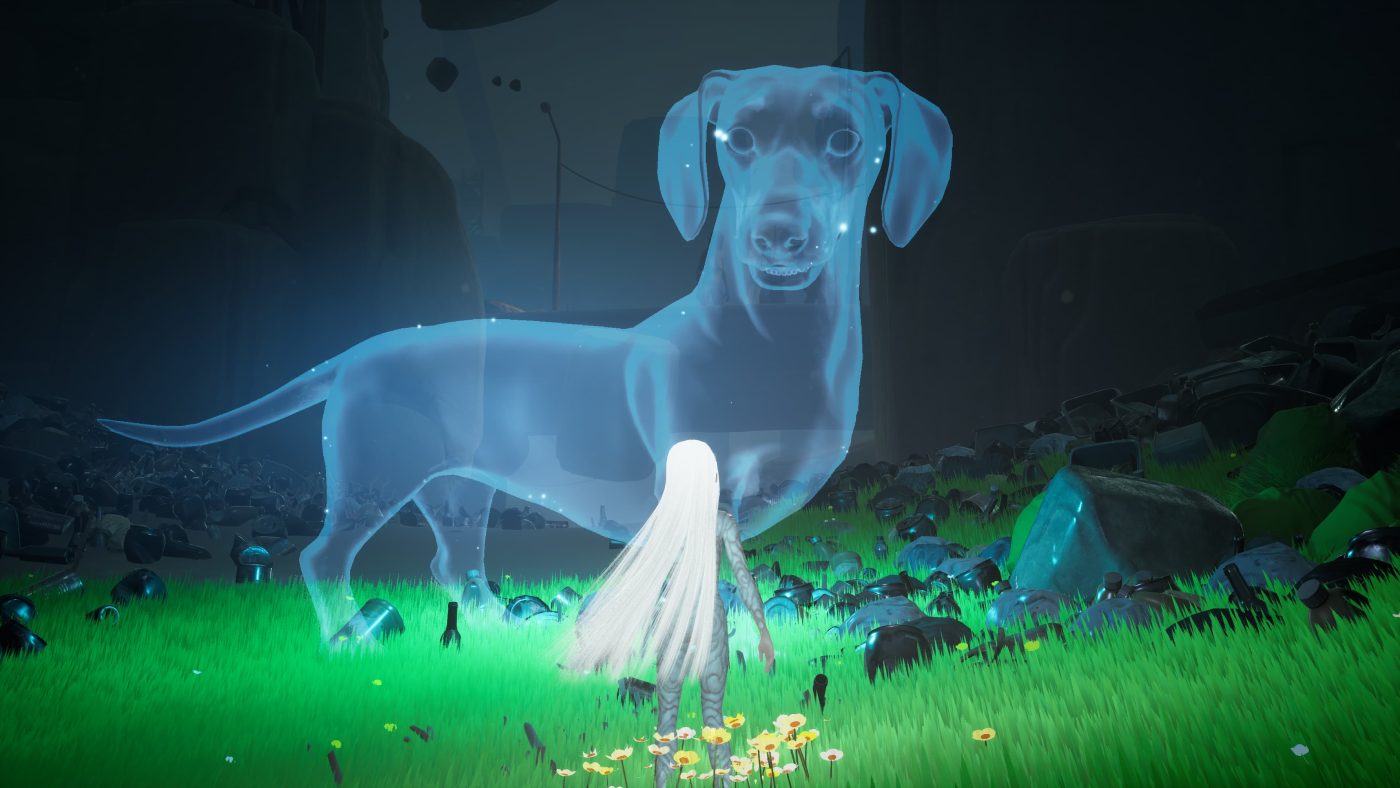
A Narrative That Packs a Punch
After Us tells its story entirely without words. There are no dialogues, explanatory cutscenes, or text to guide the player. All understanding arises from the visuals, the music, and the deliberate spatial arrangement of elements.
This bold narrative approach enriches the game’s identity, inviting players into a deeply personal and interpretive journey. The message remains open-ended—each player uncovers their own meaning as they navigate the layers of this evocative tale.
The game unfolds on an Earth stripped of life, ravaged by pollution, overpopulation, and the systematic environmental destruction wrought by humanity. Gaia, a being of pure light, is awakened and sent by “Mother”—a mystical entity embodying Life itself—to seek out and free the spirits of the last extinct animals. Each spirit is imprisoned in a specific region, symbolically linked to the fate that condemned it. By rescuing these spirits, Gaia returns them to Mother’s idyllic sanctuary—a safe, secluded refuge removed from the harsh reality of the game’s world, which Gaia may visit freely.
There are eight spirits to save, unlocking eight vast regions, each reflecting a human-devastated environment: sprawling landfills, oceans choked with plastic, toxic factories, and ruined cities.
Within these desolate landscapes, Gaia confronts the Devourers—semi-mechanical, corrupted humanoids who embody consumerist, self-destructive humanity. These beings wander in trance, blind and ensnared in endless routines, like factory workers or compulsive consumers enslaved by a toxic society that has drained them of purpose.
At the end of each region, Gaia releases the animal spirit, which ascends to the sky, leaving a radiant trail of light. After freeing all the spirits, Gaia confronts the final truth: life cannot be restored as it once was, but it can be reborn anew.
The closing message is bittersweet—though humanity has devastated the world, Life still finds a way to endure and bloom, even if only as memory or hope. A truly poignant and powerful finale.
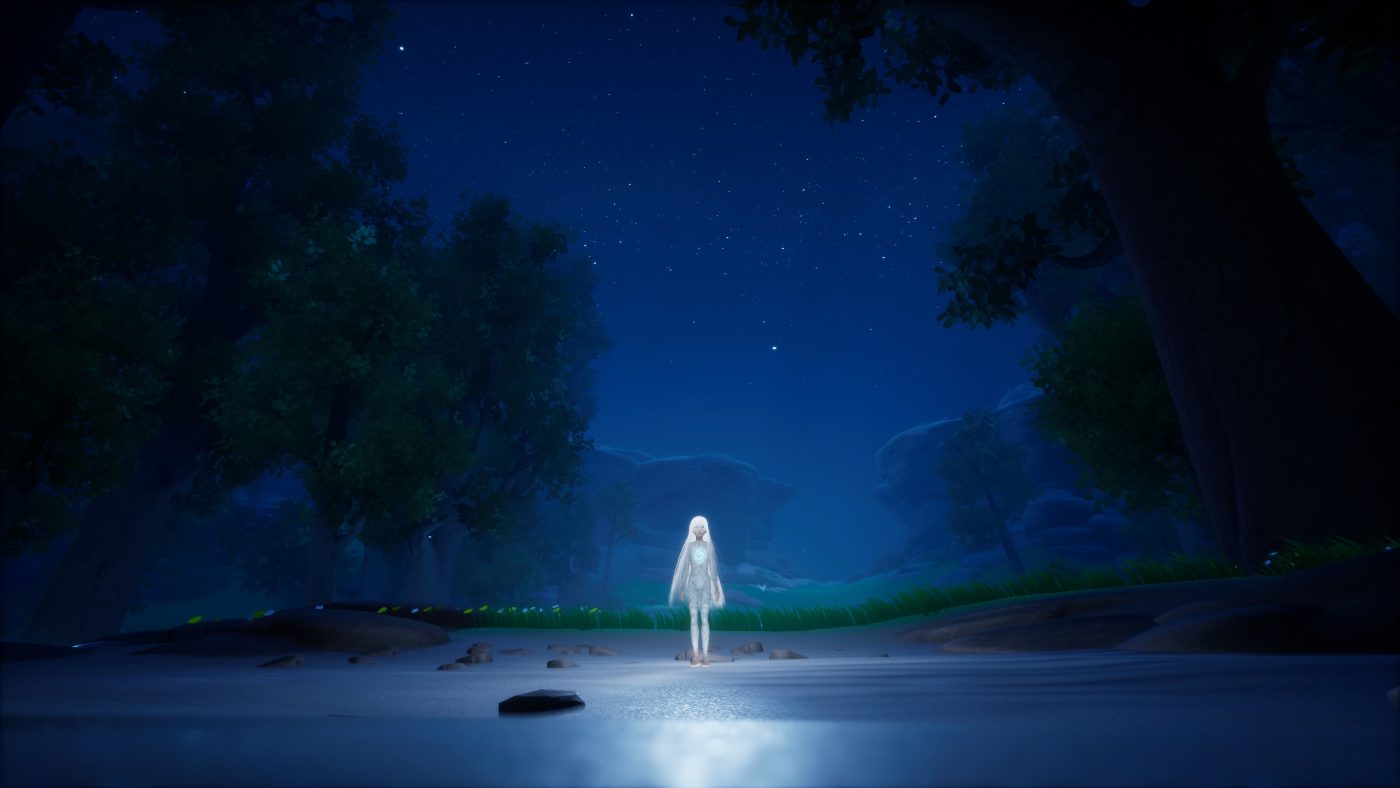
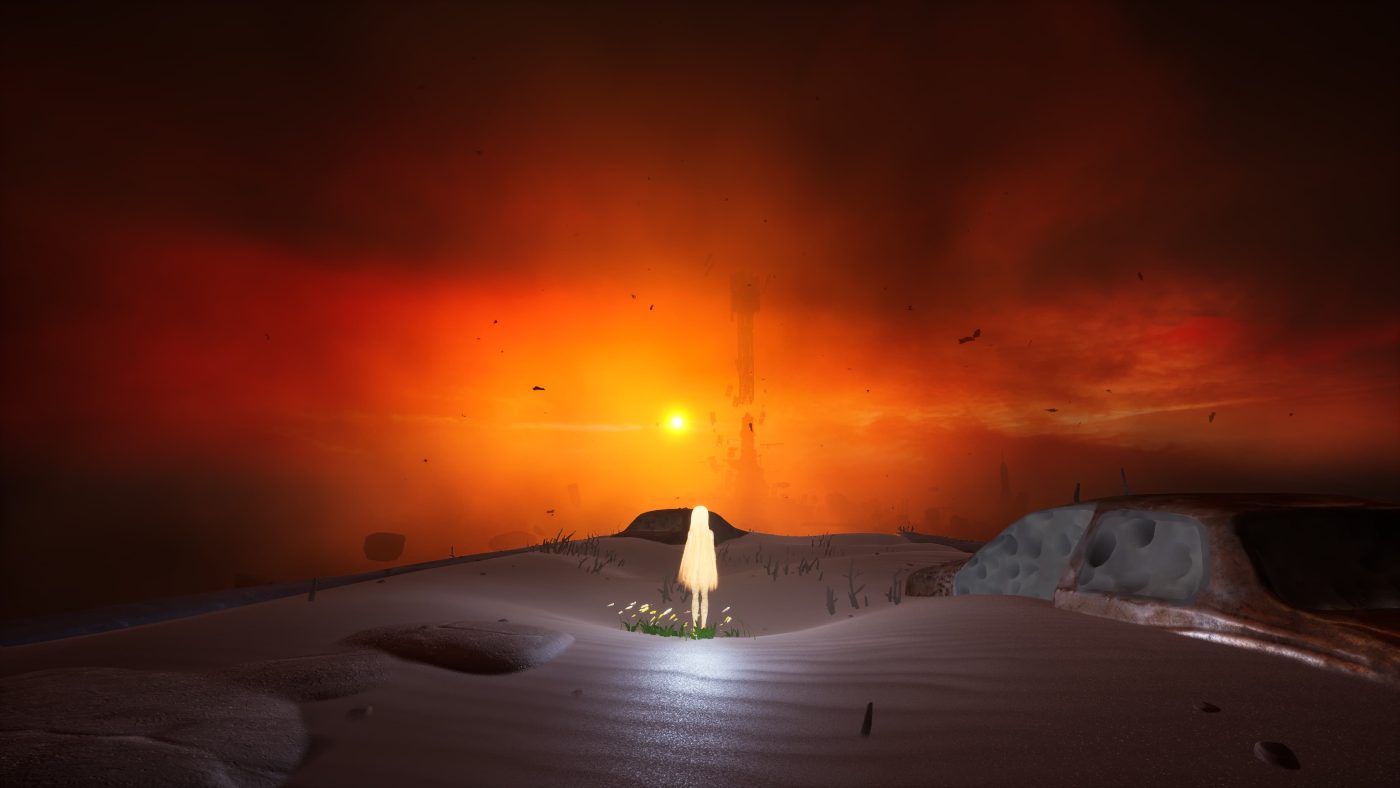
Deep, Thought-Provoking Themes
One of the most distinctive features of After Us is its powerful symbolic and metaphorical depth. Rather than unfolding through a traditional narrative with protagonists, antagonists, and dialogue, the game builds an environmental storytelling experience grounded in visual suggestion and emotional intuition. The narrative is immersive and non-verbal, grounded in powerful symbols that call for active interpretation.
At its core lies the theme of ecocide—the systematic destruction of the planet by human civilization. Each region of the game embodies a distinct facet of this devastation: a landfill where Gaia must wade through oceans of refuse speaks to marine pollution; a factory filled with Devourers locked in mechanical, repetitive gestures reflects industrial alienation; an urbanized desert strewn with billboards captures the emptiness of rampant consumerism—and so forth.
These depictions are never literal or photorealistic. Instead, the game embraces a surreal, symbolic visual language, evoking the works of Dalí and Magritte, as well as the dreamlike, metaphor-rich worlds of Journey and Inside. Petrified human figures frozen in ruin, monumental structures, saturated hues, and stark contrasts of light and shadow compose a poetic, unsettling universe—one that speaks of absence and loss, often through silence itself.
Memory is another central motif. The animal spirits are not merely to be rescued, but remembered. Each one symbolizes a species driven to extinction by human actions. When Gaia sets them free, they perform symbolic movements—dances, flights, or final runs—echoing both their last moments and a kind of transcendental return to life. There is no happy ending here—what remains is a contemplative sense of commemoration, almost spiritual in nature.
Gaia herself is a deeply symbolic figure—an embodiment of primordial life, but also of fragile hope. Ethereal, radiant, and delicate, she possesses the ability to restore small patches of vegetation along her journey—a mechanic that also serves a narrative function. With every step, nature timidly attempts to reclaim its space, though it remains a silent and often futile resistance. The gesture Gaia performs to release each spirit carries a sacred, almost religious weight—a mournful, salvific ritual brought to fulfillment.
From a narrative standpoint, After Us is a profoundly emotional experience—one that speaks without words. Its strength lies in the unity of gameplay, visual identity, and thematic depth. For some, this very coherence might feel overwhelming or even overly didactic. At times, the game appears to “shout” its ecological message, leaving little room for ambiguity. Yet, within the context of such an urgent theme, this expressive clarity feels more necessary than excessive.
Ultimately, the strength of its symbolic storytelling endures. Few games offer such a deeply introspective journey through themes as pressing—and often neglected—as climate change, the collapse of biodiversity, and the fragile, fractured relationship between nature and technology.
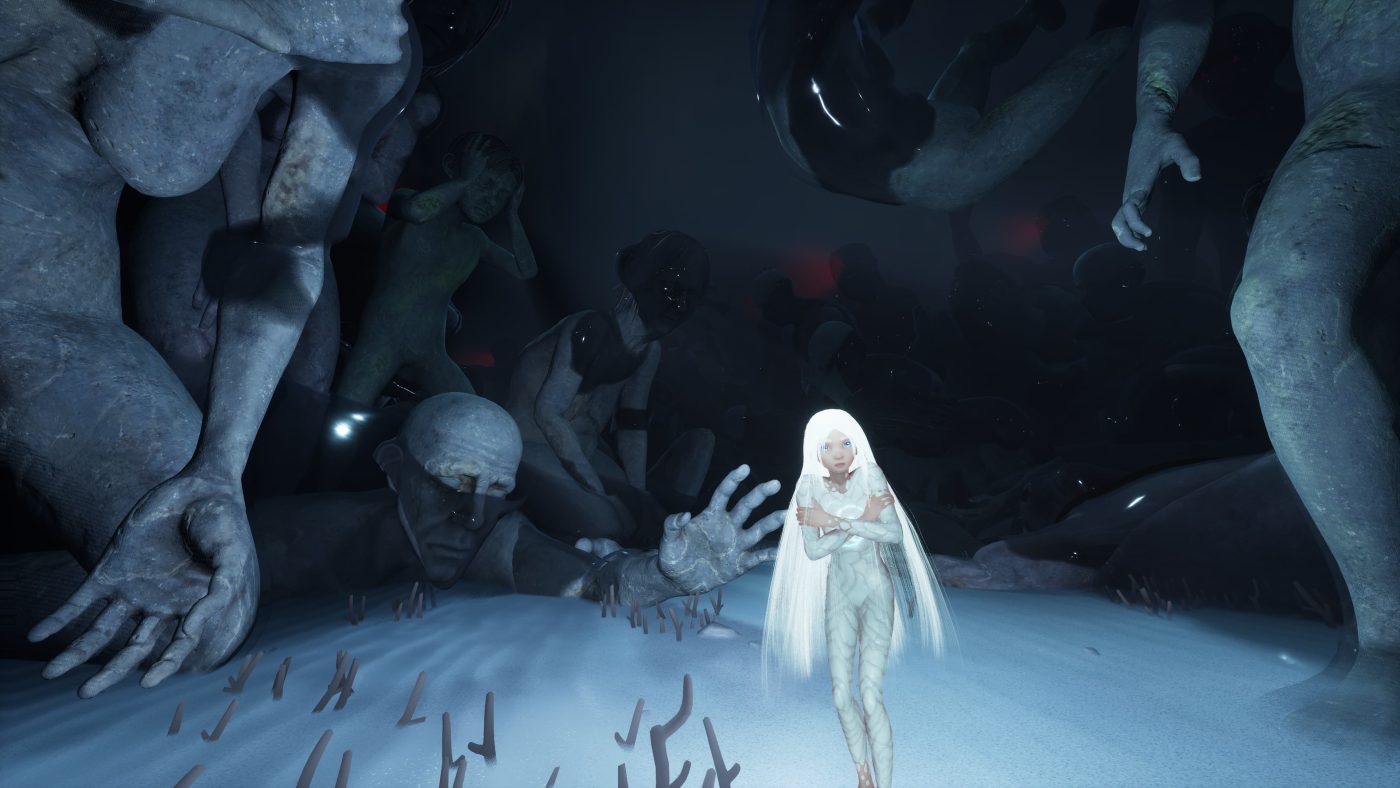
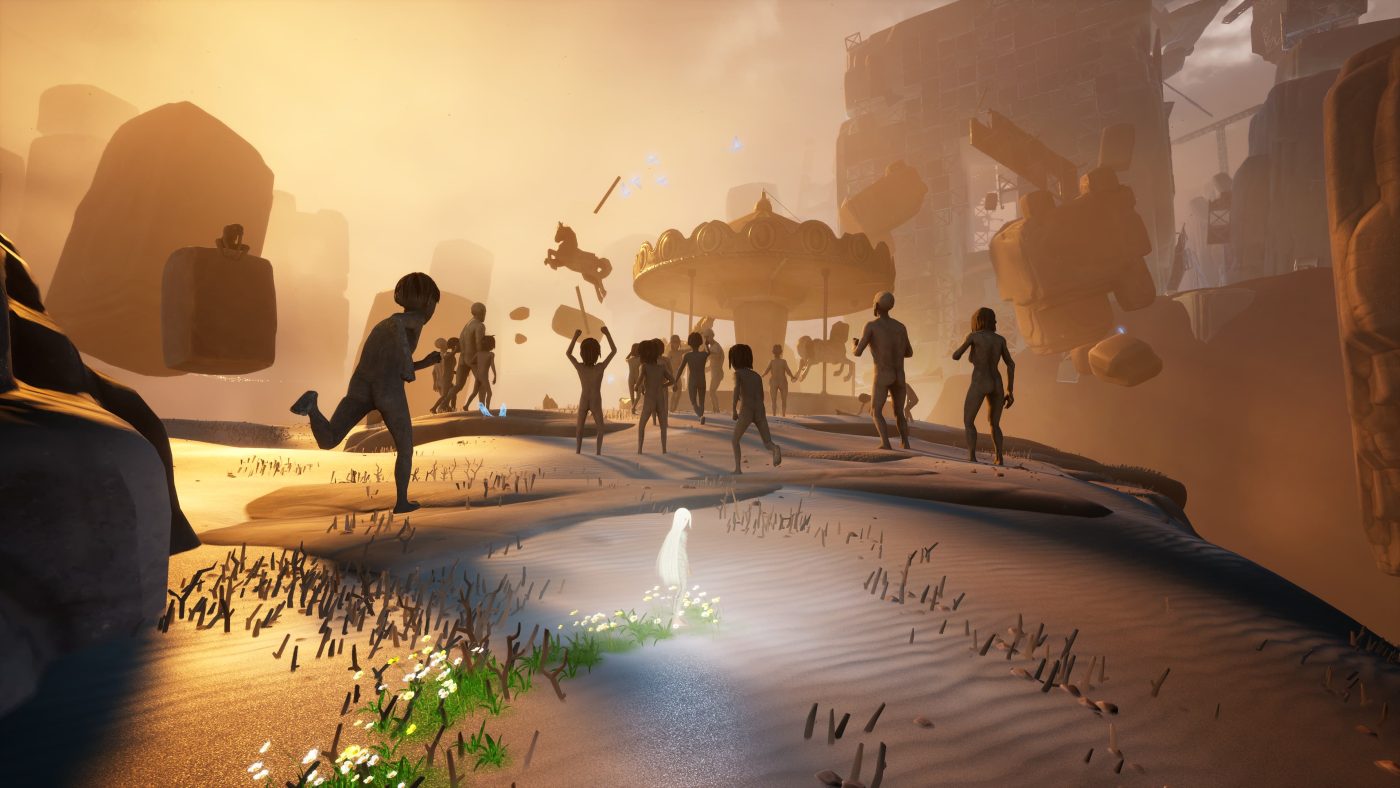
Art Direction and Visual Design: A Harmonious Duo
From a technical standpoint, After Us proves to be remarkably solid for an independent production. Thanks to the capabilities of Unreal Engine, Piccolo Studio has crafted a visually cohesive and captivating world, blending vast, expansive spaces with fluid and readable level design, delivering a spectacular visual experience rich in detail and evocative atmosphere. The engine is well-suited to the aesthetic the team set out to achieve: sweeping, decayed landscapes, lit by dynamic particle effects and bold color contrasts. Altogether, it evokes the resurgence of life in a world long devoid of it.
Equally dual is the contrast between zones corrupted by humanity and those restored by Gaia, captured through dynamic lighting and specialized shaders that clearly distinguish between toxic and natural materials, allowing for smooth, expressive transitions from “dead” to “living” environments.
In terms of performance, the game maintains a stable 60 fps in most situations, though certain areas—particularly during vegetation bloom effects or the final segments—can show occasional frame drops or minor visual glitches.
The art direction is without a doubt one of After Us’ most distinctive and compelling strengths. The team has embraced bold visual contrasts: Gaia’s radiant, ethereal figure stands out starkly against the bleak, decaying backdrops that surround her. Each area is defined by a distinct color scheme that instantly conveys tone and narrative theme: for instance, rusty greys for industrial zones, toxic blues and greens for polluted oceans, or deep reds in the most violent and corrupted areas—and so forth.
The design of the Devourers, the game’s antagonists, warrants special mention. They are humanoid, yet devoid of any emotional expression—broken marionettes of varying shapes and sizes, automatons caught in lifeless, repetitive gestures, almost entirely oblivious to their surroundings. Their eerie presence—somewhere between dystopian science fiction and abstract theater—reinforces the sense of alienation and disquiet in this post-human world. They are no longer truly alive—numb, apathetic husks, indifferent to Gaia’s presence unless she comes too close, at which point they may react with hostility.
Gaia’s powers are complemented by elegant visual effects: when she spreads life, the environment responds with fluid, immediate transformation, never breaking immersion thanks to seamless synchronization of animations and shaders. This results in a constant sensation of the world breathing alongside the player, even in its quieter, more contemplative moments.
The deliberate absence of HUD elements, minimaps, or traditional indicators further enhances immersion. Players must rely on visual observation, environmental cues, and subtle graphic suggestions, such as guiding spirits or pulses of light, to navigate the world. This design choice reinforces the game’s meditative and dreamlike nature, making it feel more like a surreal journey than a conventional adventure.
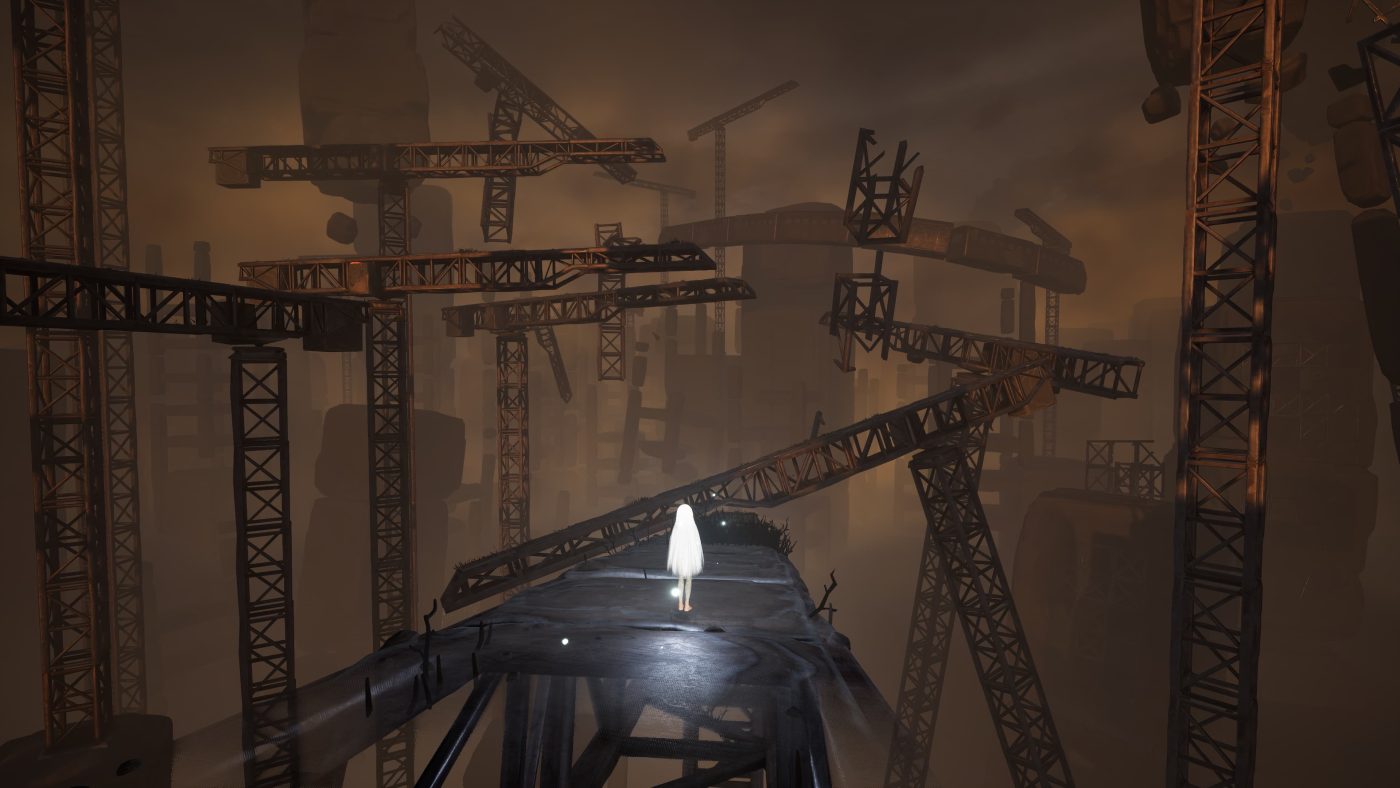
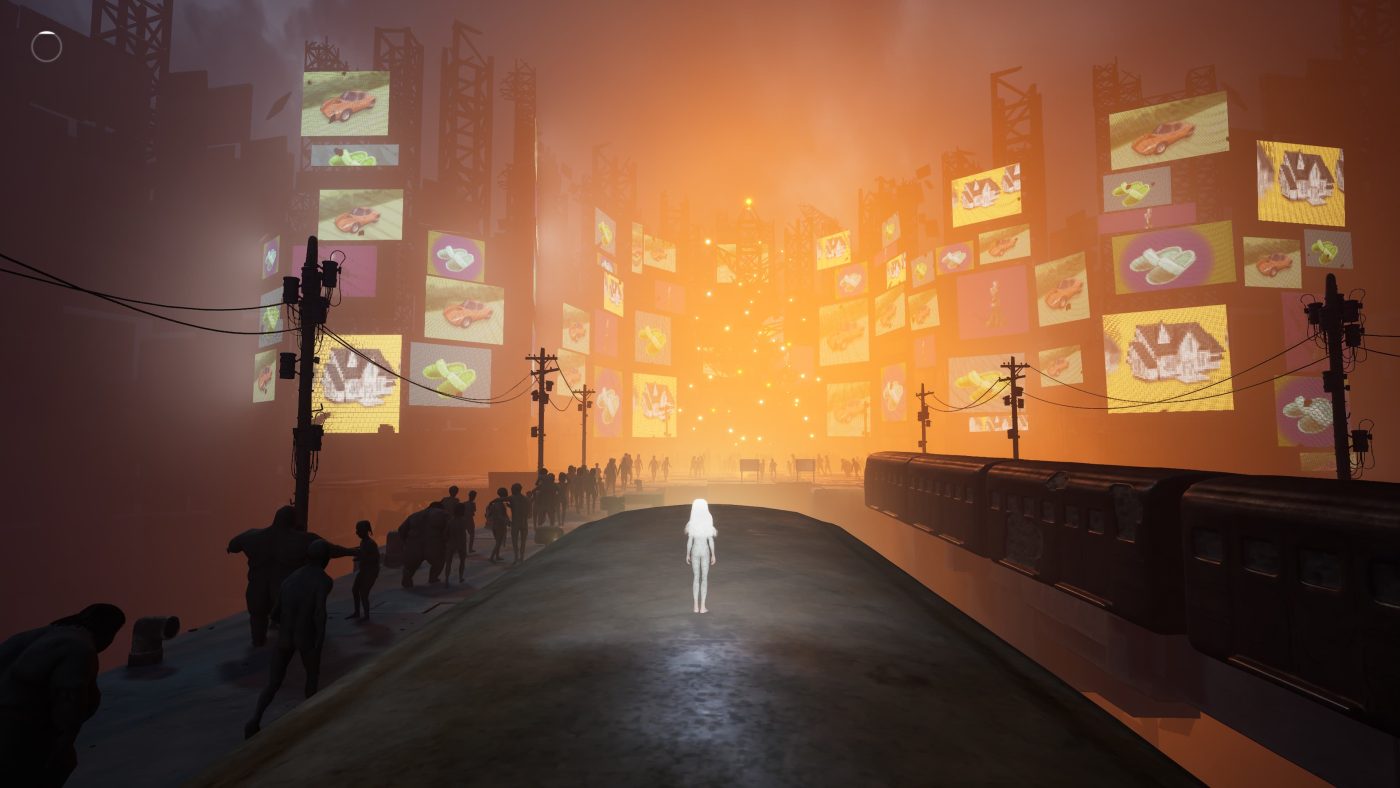
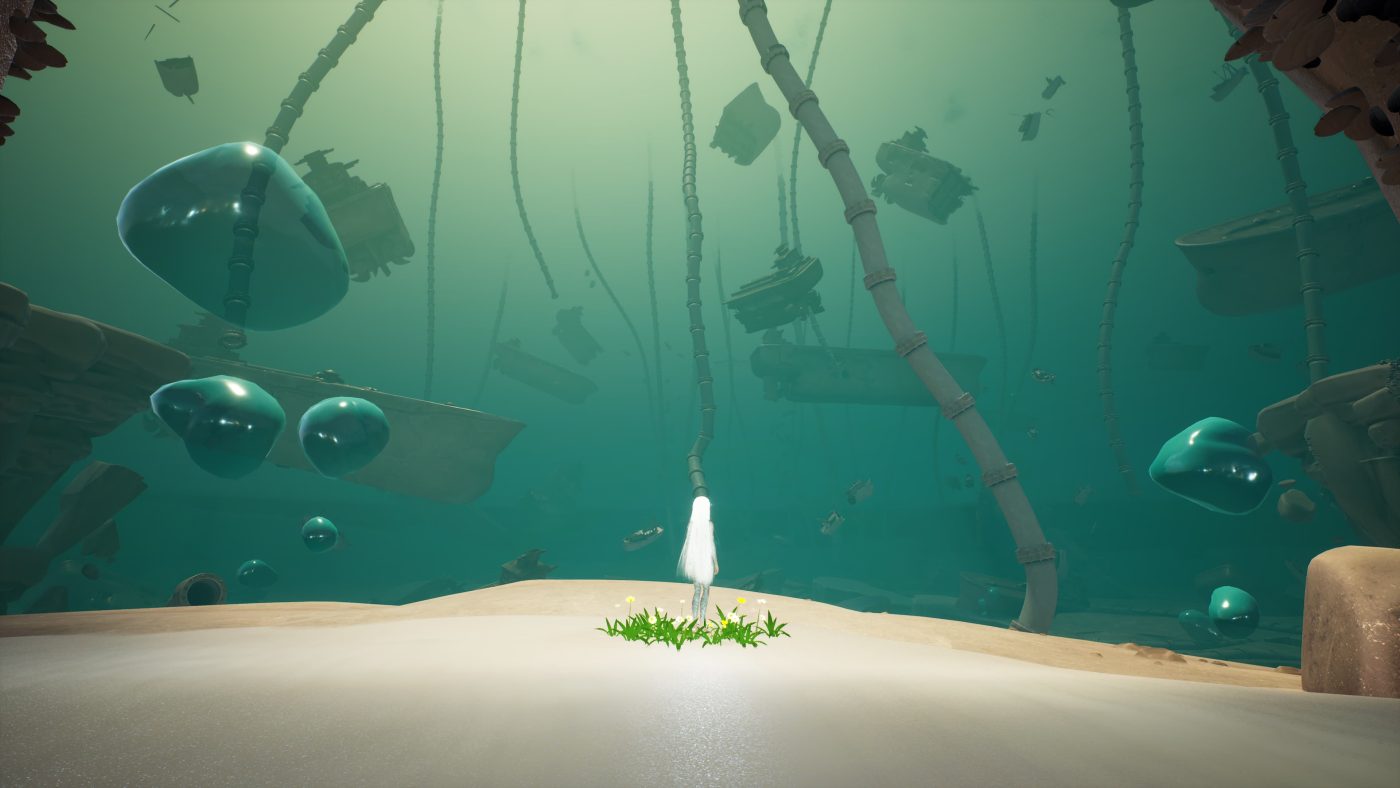
When Audio and Atmosphere Speak as One
The soundscape of After Us plays a pivotal role in crafting its atmosphere and conveying emotion. As is often the case with games centered on sensory and narrative depth, sound here is not merely decorative—it is a foundational element that anchors the player’s interaction with the world.
The original score, composed by Daniel Elms, is subtle and minimalist, yet deeply evocative. It blends ambient textures, delicate orchestral elements, and distorted electronic tones, adapting dynamically to Gaia’s surroundings. Each environment possesses a distinct sonic identity: polluted areas are scored with sparse, atonal compositions filled with metallic reverberations and warped sounds; in moments where Gaia restores life, the music swells with acoustic instruments, soft choirs, and strings; in emotionally charged scenes, it crescendos into orchestral heights, underscoring the narrative’s emotional gravity.
It’s a dynamic and adaptive soundscape, reminiscent of masterworks such as Journey, ABZÛ, and Ori and the Blind Forest. Rather than relying on traditional melodies or memorable themes, the music seeks to resonate on an emotional level—leaving the player with a lingering impression, more felt than remembered.
In terms of sound design, the game excels at creating an immersive, sensory-rich environment. Ambient rustlings define each biome’s identity; synthetic textures evoke the mechanical, lifeless quality of the Devourers and decaying structures; while delicate natural sounds—like petals drifting on the wind or grass reblooming under Gaia’s steps—breathe life into the world.
The absence of spoken dialogue is a bold, deliberate choice—one that reinforces the game’s contemplative vision. The world communicates through its own sonic language: at times hushed and distant, at others raw and oppressive. Gaia herself is voiceless—her presence marked only by faint, musical trails that shimmer in her wake.
Especially poignant is the audio design during the liberation of lost spirits: each salvation is accompanied by a unique musical passage—a quiet, solemn requiem that honors the memory of a vanished species.
Ultimately, the sound design of After Us does not strive for grandeur, but for resonance. It does not overwhelm—it envelops. It does not aim to impress—it aims to immerse. The result is a soundscape that becomes an integral part of the game’s expressive language, enriching every step of the journey.
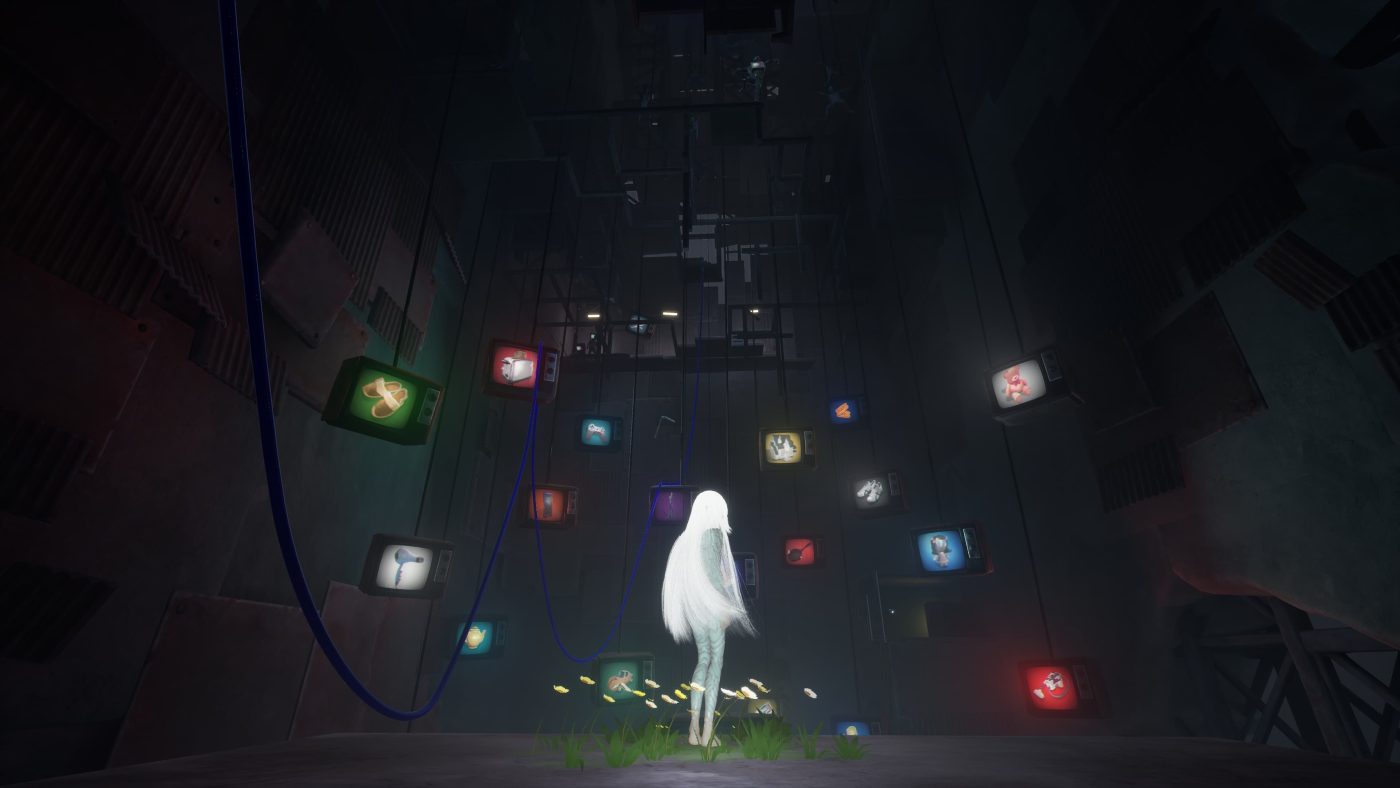
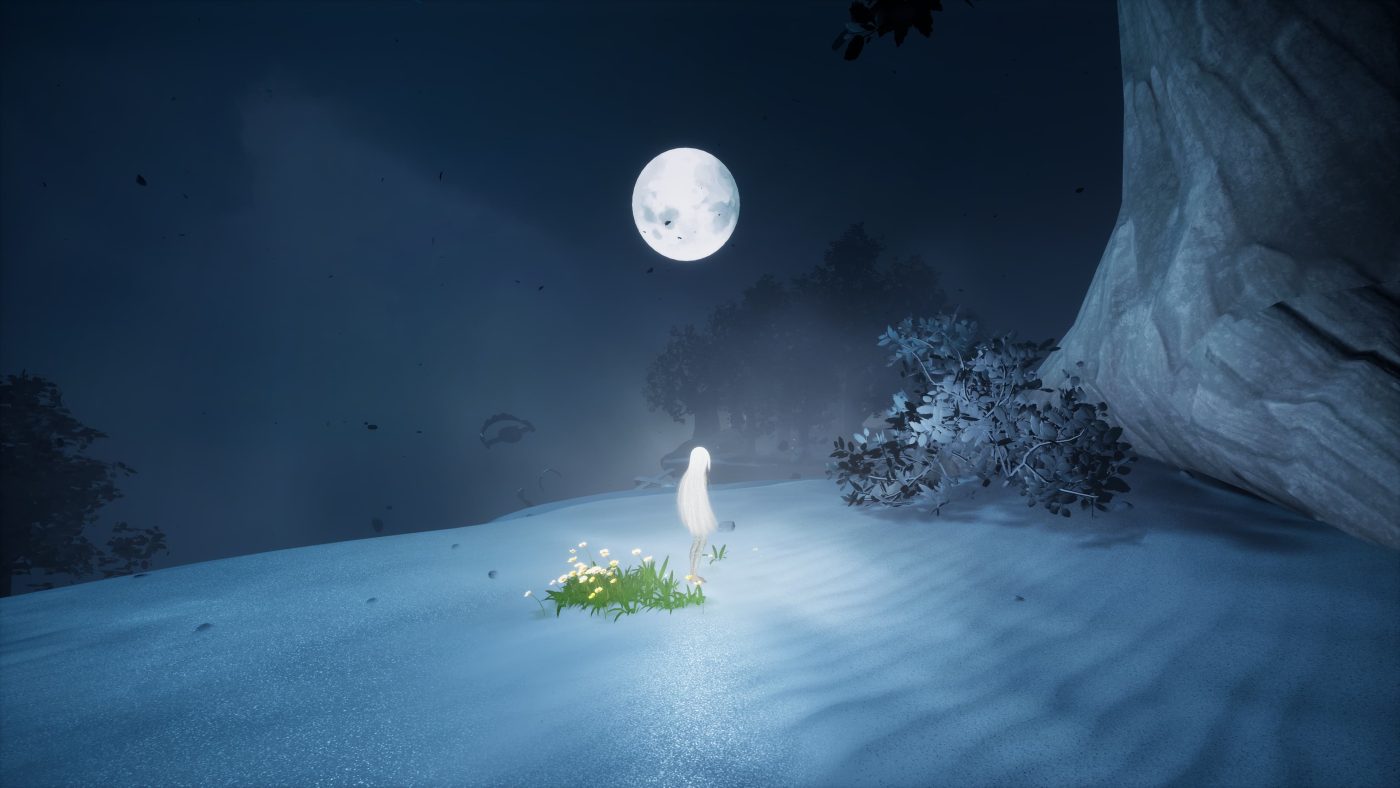
A Minimalist Experience with a Distinctive Soul
If narrative and aesthetics constitute the soul of After Us, then gameplay is the body upon which everything is anchored. The experience unfolds as a 3D platformer with light action elements, intricately woven with exploration and environmental purification mechanics. The deliberate absence of HUD, markers, or intrusive tutorials reinforces a commitment to full immersion, entrusting the player with both the freedom—and the responsibility—to interpret what they see and feel.
From the very beginning, Gaia is equipped with a core set of abilities: double jump, dashing both mid-air and on the ground, gliding on upward air currents, wall sprinting, and, most importantly, the power to spread life. Movement generally feels fluid, though controls can occasionally seem slightly cumbersome due to a deliberately light, almost ethereal physics system. While this aligns with Gaia’s spectral nature, it can lead to moments of frustration when precision is demanded. The platforming sections are thoughtfully designed but not overly challenging; the game prioritizes emotional engagement over technical difficulty.
The standout mechanic is the “wave of life”—a pulse of vital energy Gaia unleashes to revive the surrounding environment. This ability is both aesthetically striking and functionally essential: it activates pathways, purifies toxic terrain, and attracts guiding spiritual creatures. Spreading life becomes a ritualistic gesture, a recurring action that sets the steady rhythm of progression.
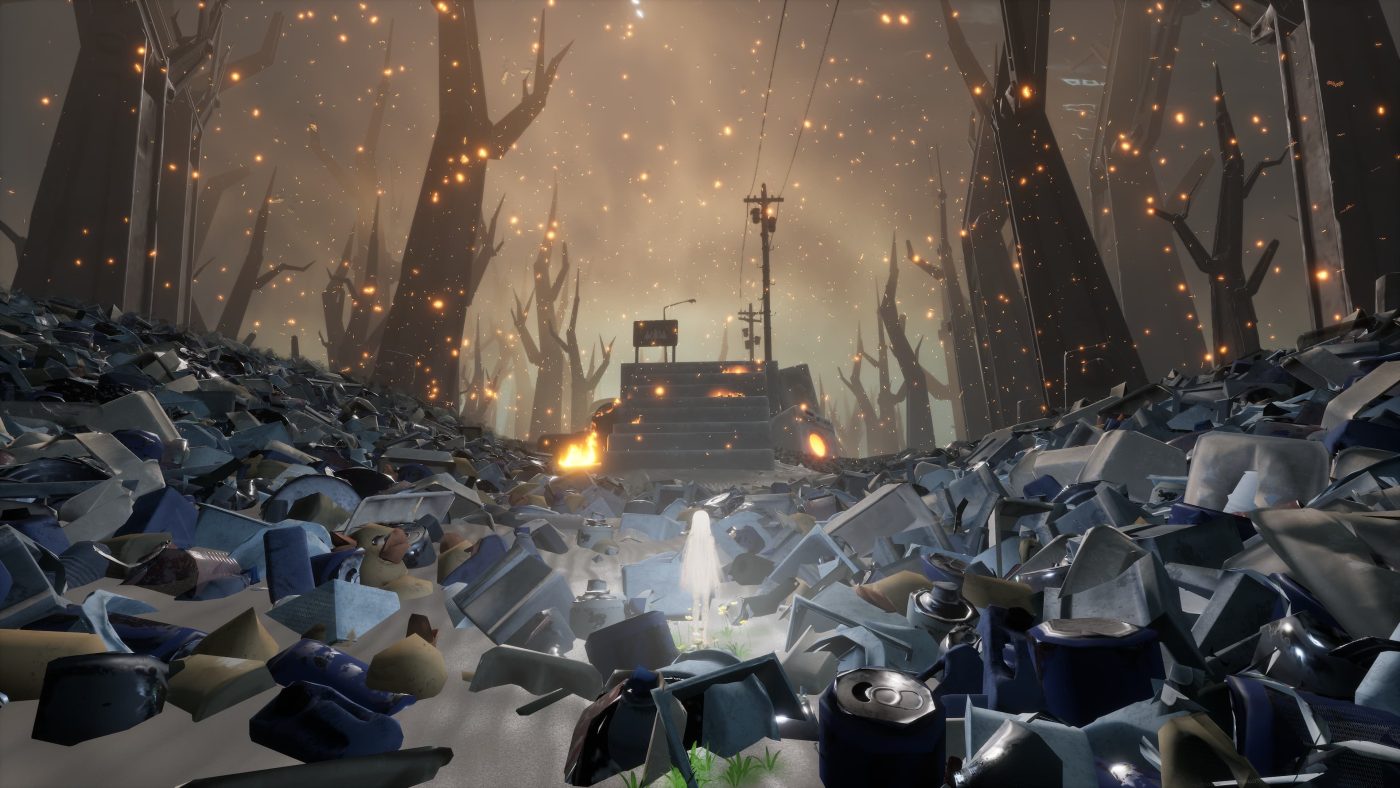
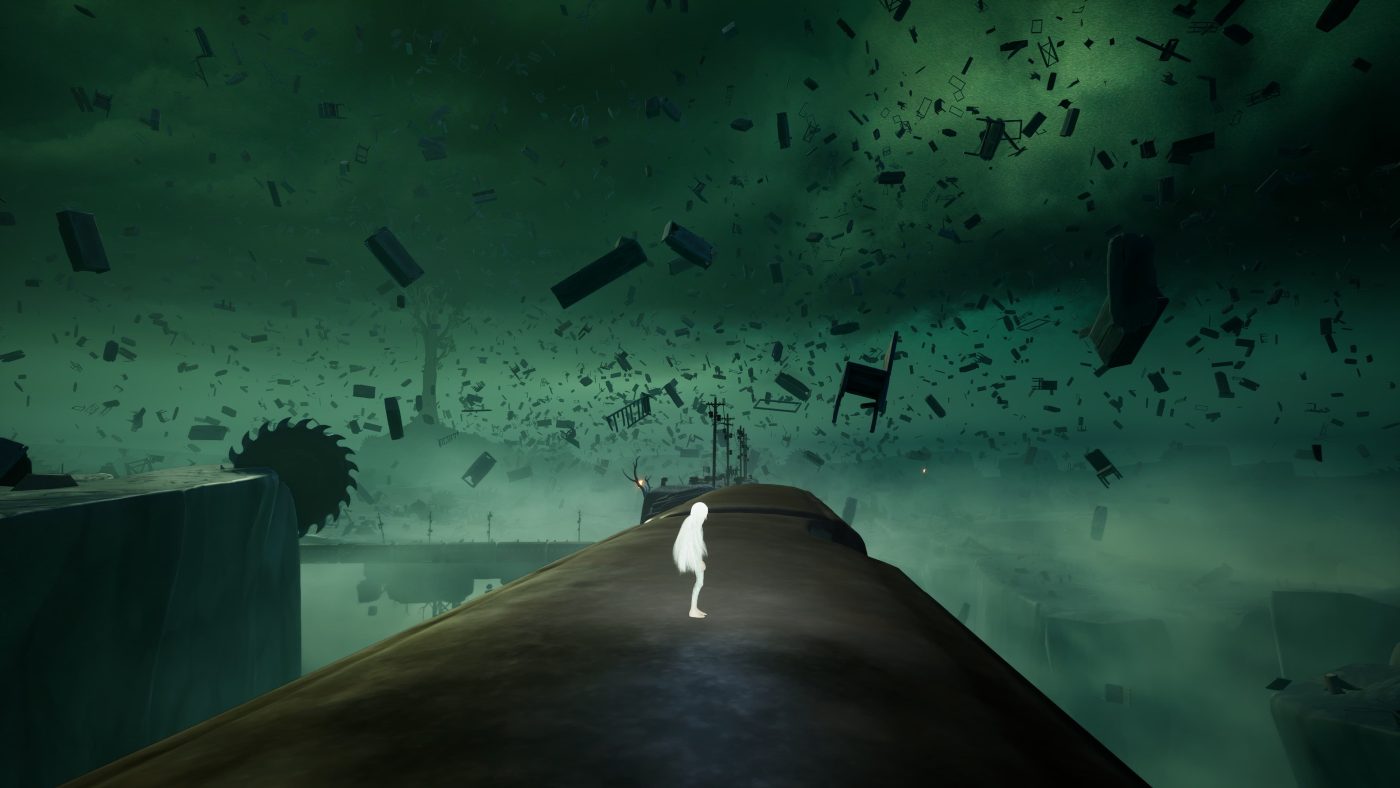
Combat is intentionally very basic. Gaia wields a ranged attack—an energy projectile thrown like a boomerang—used to purify Devourers or destroy obstacles. The combat system is straightforward and minimalistic: there are no combos, parries, or refined dodge mechanics. Combat serves primarily as a rhythmic variation rather than a core gameplay feature, perfectly reflecting the studio’s intent to craft an experience to be felt as an emotional journey. In certain segments, Devourers may encircle Gaia, injecting a bit more dynamism into the encounter, yet genuine tension never truly arises. These action sequences feel almost symbolic, resembling “spiritual resistance” more than actual battles.
When it comes to worldbuilding, exploration is mostly linear but not strictly so: each biome unfolds as an open area with a clearly defined critical path. Still, there are collectibles, hidden areas, and environmental mini-challenges to discover. The absence of a map or on-screen markers compels players to rely on visual cues, lighting, and narrative intuition. This design approach fosters attentiveness and reflection. Each biome forms a self-contained microcosm, boasting its own distinct visual and auditory identity along with unique environmental mechanics—such as moving platforms crafted from discarded debris, toxic zones requiring purification, and ascending air currents that alter movement dynamics.
Progression is not tracked through stats or unlockable rewards but is instead conveyed through the world’s shifting aesthetics and environmental metamorphoses as players traverse from one biome to the next. Although the game forgoes conventional side quests, the pursuit of animal spirits—extending beyond the primary eight—fuels the drive to explore. Gaia can free dozens of lesser souls, each discovery weaving a vital thread in the restoration of the planet’s collective memory. Additionally, she can purify hidden areas off the beaten path, enriching the depth and nuance of exploration.
Split Reception
After Us stands as a hybrid creation: more than just a video game, it is a visual reflection, an environmental allegory, and a symbolic odyssey through the memory of a ravaged world. The title elicits sharply divided opinions, with critical reception oscillating between admiration and skepticism.
The game’s aesthetic has garnered near-universal acclaim, often likened to indie masterpieces such as Journey, GRIS, and Inside. Its stylized, surreal, and symbolic artistic direction is both compelling and consistent. The game’s pressing and relevant themes have been met with considerable praise, handled with notable grace; many reviewers commend its ecological message and its unconventional narrative style.
A profound sense of total environmental immersion—achieved through the absence of HUD, evocative soundscapes, and a seamless fusion of gameplay and visual design—is another of the title’s defining strengths, resonating deeply with players.
Nevertheless, the game is not without criticism. Some find the gameplay increasingly repetitive: beyond the initial stages, many mechanics recur without substantial evolution. While the platforming segments are visually striking, they lack both variety and progressive challenge. The combat system, too, has been noted as rudimentary, featuring minimal action sequences that often feel superficial and underdeveloped.
Reception of the narrative is equally polarized. Many players find it captivating, contemplative, and immersive, yet others perceive it as overly cryptic or didactic. Some critics describe the environmental storytelling as excessively opaque, while others take issue with what they consider an overtly moralizing or “preachy” tone.
In conclusion, After Us has resonated with critics more for its thematic depth and artistic style than for its gameplay mechanics. It is a divisive experience—unsuited for those seeking a conventional game, yet profoundly rewarding for players attuned to its emotional depth and the nuanced manner in which its themes are expressed.
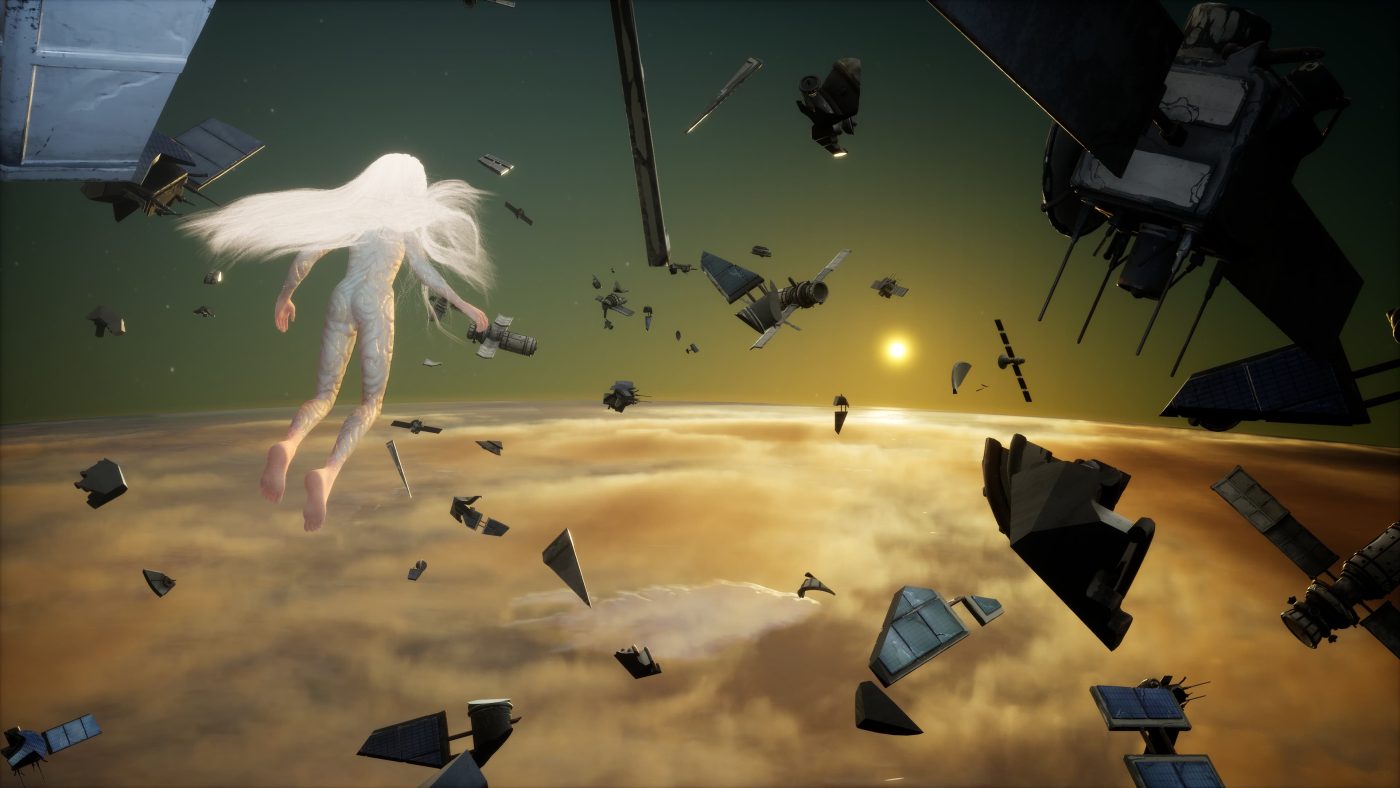
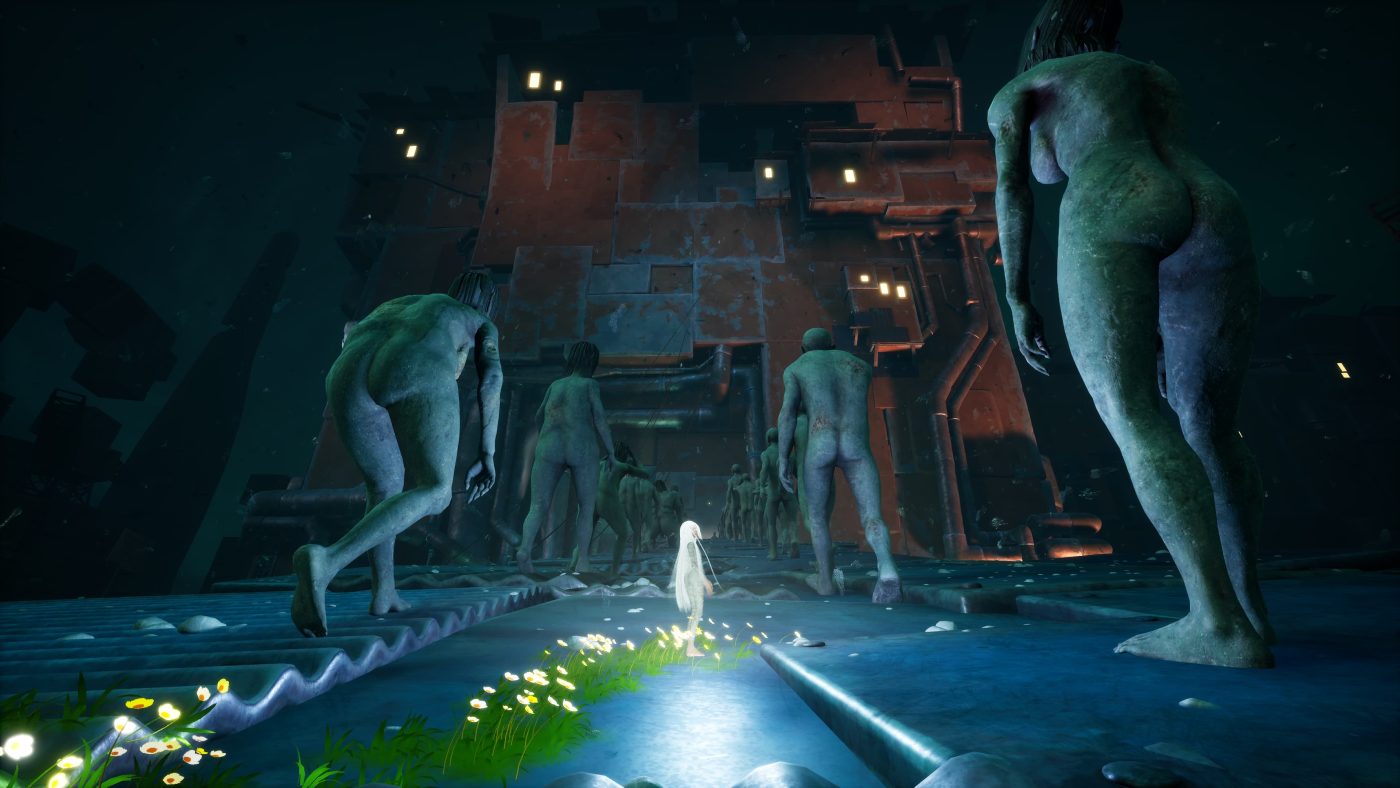
After Us
PRO
- Stunning, inspired, and richly symbolic art direction;
- Profound and timely themes, reflecting ecological awareness, the memory of what once was, and the will to shape what lies ahead;
- A deeply moving soundtrack and immersive, atmospheric sound design;
- Exploration-focused gameplay free of HUD or intrusive UI, enhancing immersion and experiential flow;
- A contemplative, almost meditative experience—a deeply introspective journey;
- Poetic, evocative, and symbol-laden environmental storytelling.
CON
- Repetitive gameplay loop, with limited variety;
- A noticeable imbalance between narrative ambition and interactive engagement;
- Occasional imprecision in platforming controls, particularly during more technical jumps;
- Basic and underwhelming combat system;
- Map design, while intentionally minimal, can lead to disorientation due to the absence of navigational cues.

